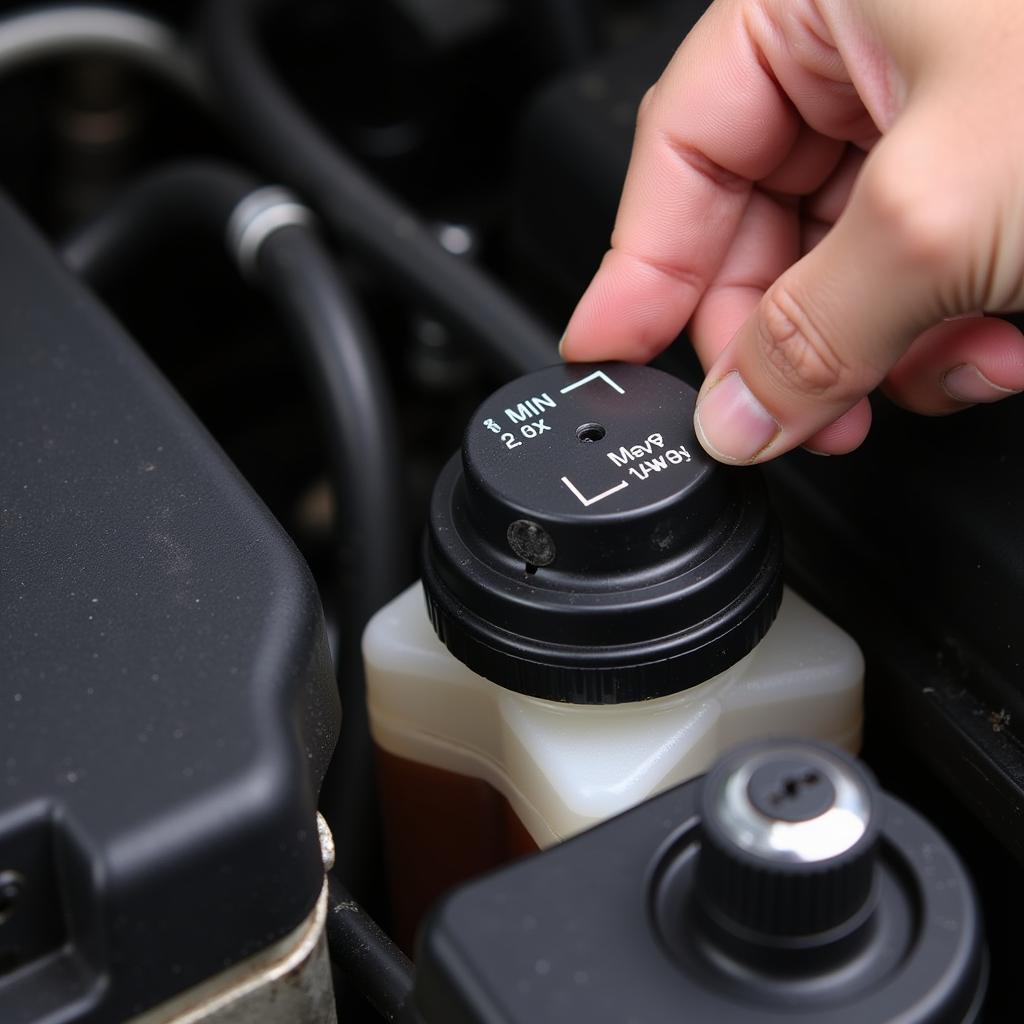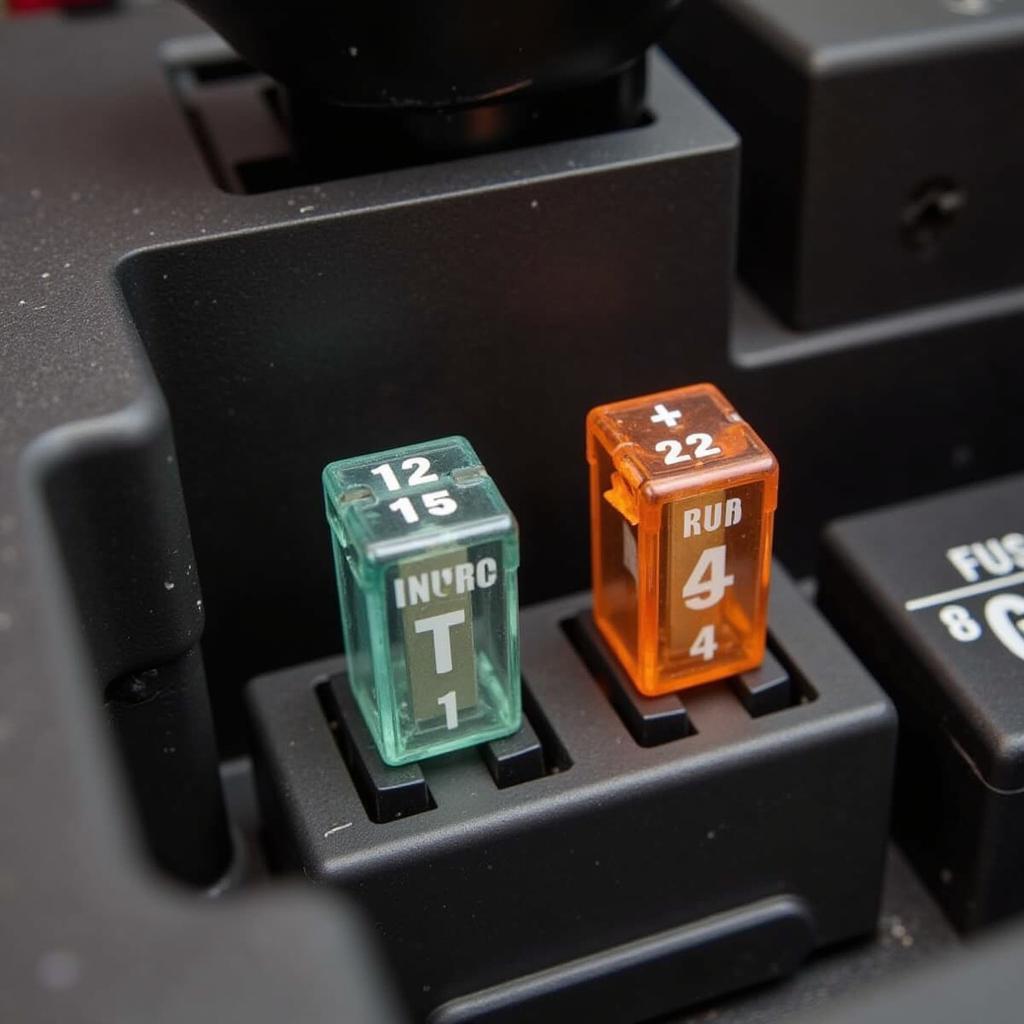A glowing brake fluid warning light on your 2006 Saab 93 2.0T dashboard is a signal you can’t afford to ignore. It usually indicates a problem with your braking system, potentially jeopardizing your safety and that of others on the road. While a trip to a mechanic is always recommended, understanding the common culprits behind this warning light can empower you to take appropriate preliminary steps.
Common Causes of a Brake Fluid Warning Light
Several factors can trigger the brake fluid warning light in your Saab 93 2.0T. Here are some of the most frequent reasons:
Low Brake Fluid Level
The most common culprit, low brake fluid, can occur from leaks in the braking system or worn brake pads.
Expert Insight:
“Always check your brake fluid level first when the warning light illuminates,” advises veteran mechanic John Thompson. “A simple top-up might be all you need, but remember, persistent drops in fluid level usually indicate a leak requiring immediate professional attention.”
Worn Brake Pads
Over time, brake pads naturally wear down. If your brake pads become excessively thin, it can trigger the warning light.
Brake Fluid Leak
A leak anywhere in your brake system, including the master cylinder, brake lines, or calipers, can lead to a significant drop in brake fluid level, activating the warning light.
Faulty Brake Fluid Level Sensor
Though less common, a malfunctioning brake fluid level sensor can erroneously trigger the warning light even if your brake fluid level is adequate.
Air in the Brake Lines
Air trapped in your brake lines can compress, leading to a spongy or soft brake pedal and potentially triggering the brake fluid warning light.
What to Do When Your Brake Fluid Warning Light Comes On
If the brake fluid warning light illuminates while driving your 2006 Saab 93 2.0T, it’s crucial to react promptly and cautiously:
- Safely pull over: Find a safe location to pull over as soon as possible. Avoid sudden braking, as this could exacerbate the issue.
- Check your brake fluid level: Carefully open the hood and locate the brake fluid reservoir. Most reservoirs have a “Min” and “Max” marking. If the fluid level is below the “Min” mark, your car needs immediate attention.
- Add brake fluid (if necessary): Only add brake fluid if you have the correct type for your Saab and are comfortable doing so. Refer to your owner’s manual for guidance.
- Avoid driving further (if possible): If the brake fluid level is significantly low, you’ve added fluid but the light persists, or you suspect a leak or other brake system issues, do not drive further. Call a tow truck and have your vehicle transported to a trusted mechanic.
- Seek professional help: Even if you managed to temporarily resolve the issue by adding brake fluid, it’s crucial to have your vehicle inspected by a qualified mechanic to diagnose and address the underlying problem.
Remote Diagnostics and Software Solutions for Modern Vehicles
With advancements in automotive technology, remote diagnostics and software solutions are becoming increasingly prevalent in identifying and resolving vehicle issues, including those related to braking systems. Specialized technicians can remotely access your vehicle’s onboard computer system to pinpoint faults, potentially saving you time and money compared to traditional diagnostic methods.
Expert Insight:
“While remote diagnostics can be invaluable for identifying certain brake system issues,” clarifies automotive electronics specialist Sarah Chen, “it’s crucial to remember that physical inspection and repairs by a qualified mechanic are often still necessary for comprehensive diagnosis and resolution.”
Conclusion
The brake fluid warning light is a critical safety indicator in your 2006 Saab 93 2.0T. Addressing this issue promptly and responsibly can prevent potential hazards and ensure your safety on the road. If you’re unsure about any aspect of dealing with brake system issues, always err on the side of caution and seek professional assistance from a qualified mechanic.


